
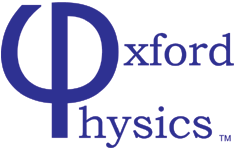
The Merton College Graduate Scholars in Physics
at the University of Oxford
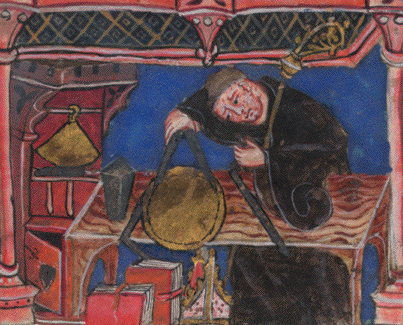

Merton College offers a number of Graduate Scholarships dedicated to the study of Physics. The Scholarships do not require a separate application: subdepartments of the Department of Physics nominate some of their most outstanding graduate applicants and Scholars are then selected from this shortlist by the Physics Tutors of the College. The only selection criterion is academic and intellectual merit.
| The James Buckee Scholarship was founded in 2010 by Dr James Buckee. The Scholarship is in all areas of Physics and has no nationality or other eligibility restrictions. It normally offers full financial support, including all fees (overseas or domestic) and a maintenance grant for up to 4 years. This is currently the most generous Graduate Scholarship in Oxford Physics and the only Merton Scholarship exclusively dedicated to the subject. On all previous occasions, matching support was offered by the Department of Physics, enabling us to elect 8 Scholars since 2010. The next (9th) James Buckee Scholar will be elected in 2021. |
|
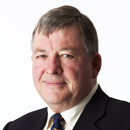 Dr James Buckee, a former graduate student at Merton, has held senior executive positions with Shell, Burmah Oil and BP. He was appointed President of Talisman Energy Inc in 1991 and CEO in 1993 and held both posts until retiring from Talisman in October 2007. |
| The Jackson Scholarship was founded in 2007 by the bequest of James W. Jackson. The Scholarship is in Natural Sciences, rotating between Biochemistry, Chemistry, Physics and Zoology. It is restricted to UK nationals by the terms of the bequest and offers full support (domestic fees and maintenance) for up to 4 years. The next Scholar in Physics will be elected in 2023. |
James W. Jackson was born in 1925 and read Engineering Sciences in 1942-1945 at Merton College. He was a Divisional Surveyor for Kent County Council for 29 Years. James Jackson died in 2004, leaving his entire estate to the College. His bequest was for the "Jackson Scholarship" in the Natural Sciences to be open to British Graduates. |
|
| The Domus (Merton) Scholarships There are two types of these scholarships: the Scholarships operated via the Clarendon Trust and the Merton Graduate Scholarships, which offer full support (fees and maintenance) for up to 4 years, sometimes in conjunction with Research Council funding. Scholars are appointed in all subjects, on a rotating basis. The next competition in Physics will be held in 2023. Prize Scholarships These scholarships reward outstanding achievement amongst our existing graduate students. There are four every year, open to all subject areas. |
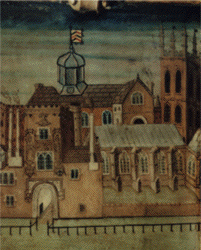 The Domus graduate scholarships were created in 1931, when the College received a bequest for this purpose from the estate of Sir Hildebrand Harmsworth (Merton 1892). In the 80 years since, the number of awards was expanded and they are now funded directly from the College income, as well as from donations. |
|
Merton Graduate Scholars in Physics (since 2010) |
||
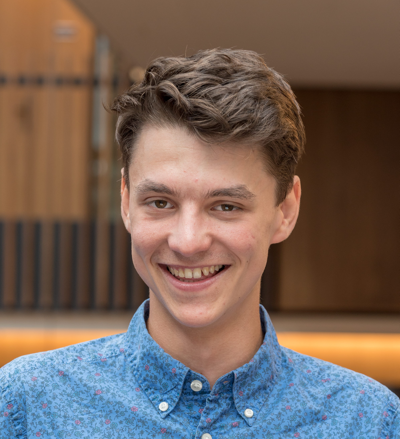 |
Toby Adkins Prize Scholar 2020-2021 "During my undergraduate
MMathPhys degree at Merton, I was lucky enough to do a summer project
in Theoretical Physics, where I worked alongside Prof. Schekochihin
investigating some nonlinear plasma kinetics. Looking back on it now,
this must have sparked my interest in plasma physics as a whole! My
current DPhil research, working alongside Prof. Schekochihin and now Dr
Colin Roach (CCFE, Culham), focuses on the turbulent heat transport
properties of fusion plasmas, in order to better understand how heat
that is injected into the plasma is transported throughout it, and thus
optimise the design of future nuclear fusion experiments to ensure
maximum energy confinement. Specifically, I am concerned with the
physics of the electron temperature gradient (ETG) instability; the
difference in the temperature between the electrons in the core and
those at the edge of the plasma sets up a temperature gradient, which
provides a source of free energy for unstable, small-scale
perturbations that drive the plasma towards some saturated state.
Knowing how the resultant turbulent heat flux depends on the
temperature gradient, one can find the heating power that needs to be
provided to support a high enough temperature in the core of the
device, so that fusion may occur. Using a combination of analytical
('pen-and-paper') and computational research methods, I hope to provide
a comprehensive picture of the heat transport properties of ETG
turbulence.
I am immensely grateful for the support from both Merton College and CCFE for my work. Merton has been an absolutely wonderful place to study and socialise; since arriving at Merton as an undergraduate in 2014, I have been constantly impressed with the welcoming nature of the community at the college, as well as the academic and financial support offered by the college at all levels of study. To any students unsure of what college to apply for---whether for undergraduate or postgraduate study---I could not recommend Merton more highly!" |
|
| Jacob Robertson EPSRC MPLS Excellence Scholar 2020-2024 TBA |
||
| Hiroto Takahashi Toyota Riken Overseas Scholar 2020-2023 TBA |
||
| Matthew Goh Rhodes Scholar 2020-2023 TBA |
||
| Jovan Jovanovic Merton Graduate Scholar in Physics 2020-2024 TBA |
||
| Minghao Li The 8th James Buckee Scholar 2020-2024 (co-sponsored by ERC via Oxford Condensed Matter Theory Group) TBA |
||
| Jonathan Classen-Howes Graduate Scholar (Fonds de Recherche du Quebec) 2019-2021 TBA |
||
| Toby Swann The 7th James Buckee Scholar 2019-2023 (co-sponsored by the Royal Society via Oxford Condensed Matter Theory Group) TBA |
||
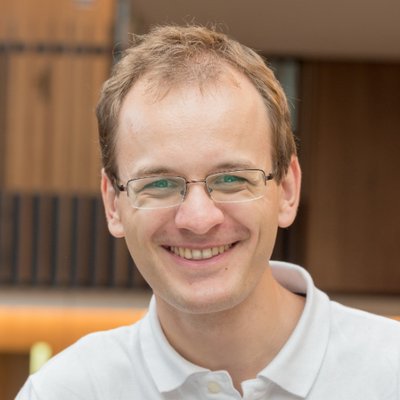 |
Philipp Windischhofer The 6th James Buckee Scholar 2018-2022 (co-sponsored by STFC via Oxford Particle Physics) "We have reached a very
exciting point in our exploration of the fundamental laws of our
Universe; a time where the reign of symmetry has come to an end, where
the long-standing hierarchy of scales has collapsed and where even
established physical concepts may need to be rethought. In these
confusing times, I decided to swap experimental thoroughness for
theoretical rigour and embark on a journey to help elucidate the
mysteries of the Higgs boson during my DPhil. Using data collected by
the ATLAS detector at CERN’s Large Hadron Collider, we are building the
most precise---and most complete---characterisation of this unique
particle to date. As the only fundamental scalar particle ever observed
in nature, understanding the Higgs boson may well hold the key to
solving some of the most basic and fundamental problems in
physics---problems that we are ready to tackle now!
Before setting off to explore the TeV scale here in Oxford, I had plunged into the depths of black holes’ gravitational wells during my studies in Vienna and Zurich, enjoyed lighting plasmas in my amateur fusioneer days and ventured into the world of quantum loops and neutrinos for a year in Paris somewhere in between." |
|
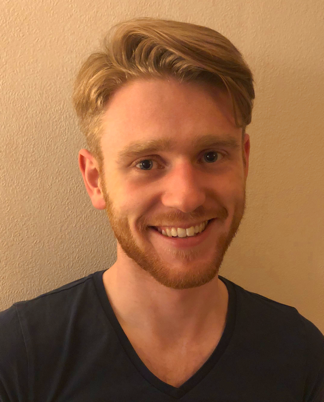 |
Archie Bott Prize Scholar 2017-2018 "A terrible play on
words it may be, but the statement ‘plasma physics matters’ is also a
true one. Around ninety percent of visible matter in the universe is in
the plasma state, meaning that realistic plasma physics is essential
for astrophysical models, including those of solar winds, accretion
discs and galaxies; simultaneously, ongoing attempts to harness nuclear
fusion as a viable energy source would have dramatic ramifications for
wider society if they were to succeed. Yet there still remain a great
number of uncertainties in plasma physics, some surprisingly basic.
What is the viscosity of an astrophysical plasma? How do these plasmas
conduct heat? What distinguishes plasma turbulence from that of
conventional fluids?
During my DPhil I have been working with Alex Schekochihin and Gianluca Gregori to address some of these questions, including the interesting phenomenon of magnetic-field amplification in initially unmagnetised plasma turbulence---the so-called ‘small-scale dynamo’. Our investigations into this process have involved analytic theory, simulations and a series of experiments creating turbulent laser plasmas on a selection of the highest-energy lasers currently in existence, including the National Ignition Facility (Livermore, US), the OMEGA laser at the Laboratory for Laser Energetics (US), and the Laser MegaJoule (France). Our results from these experiments have been exciting, providing plausible evidence for the first ever plasma dynamo to be made in the laboratory. On a personal level, I have found the application of my mathematical skills---mostly acquired during my time in the Mathematics Tripos at Trinity College, Cambridge---to cutting-edge experiments to be extremely rewarding, and would recommend it to any theoretical physicist considering further study beyond their undergraduate degree." |
|
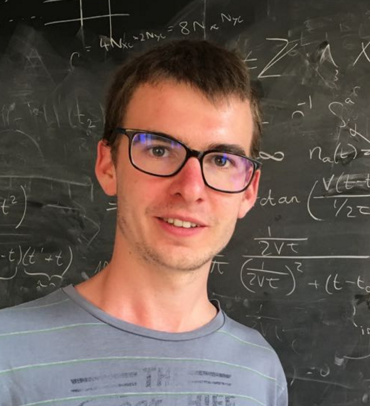 |
Glenn Wagner EPSRC MPLS Excellence Scholar 2017-2021 "I completed
my undergraduate studies at Merton and since I enjoyed my time here so
much, I decided to stay on to do a DPhil! During my Master’s I fell in
love with condensed matter theory, which looks at how systems that are
made up out of many interacting particles (usually spins or electrons)
behave. When many particles come together, new and exciting phenomena
can emerge. Looking at individual particles, this behaviour could never
have been guessed. For example, in the fractional quantum Hall effect,
quasiparticles of charge e/3 can arise, although the building blocks
(electrons) have charge e!
I am now working in theoretical condensed matter under the supervision of Prof Steven Simon. My work focusses on strongly correlated electron systems. I have done some work on calculating the conductivity of graphene using a kinetic theory approach and seeing how the conductivity changes when a magnetic field is applied. My other project is related to the quantum Hall effect. This effect is observed when a two-dimensional slab of metal (usually gallium arsenide) is placed at low temperatures and a strong magnetic field is applied. The Hall conductance then takes on quantised values. When it was first observed in the 1980s, it was totally unexpected. Although we now understand much more about this phenomenon, there is still a lot that remains to be understood. In this project, we have looked at what happens when a quantum dot (this is essentially an energy level whose energy we can tune) is coupled to an integer or fractional quantum Hall edge. We calculate the current that is produced on the edge, since this is something that people can hopefully look for in experiments." |
|
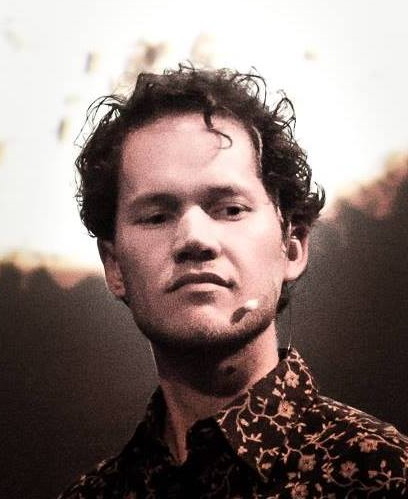 |
Yuri van Nieuwkerk The 5th James Buckee Scholar 2016-2020 (co-sponsored by EPSRC via Oxford Condensed Matter Theory Group) "Since my
first encounter with quantum mechanics, I have been intrigued by matter
under extreme conditions. I therefore like to take a quantum system and
kick, drive, stretch and quench it, to see how it responds. Violent as
this may sound, most of my work can be done using pen and paper. Armed
with these, I try to make exact mathematical predictions, based only on
the principles of quantum mechanics. This may shed light on the
fundamental ways in which quantum systems can be excited to form new
states of matter.
Before discovering my love for physics, I worked as a classical pianist. I now use this experience in a popular science show about waves in physics and music, which has featured in schools, theatres and concert halls in the Netherlands." |
|
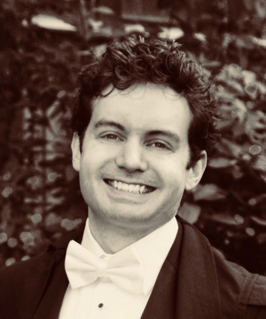 |
Jason Parisi EPSRC MPLS Excellence Scholar 2016-2020 (co-sponsored by UKAEA via Oxford Plasma Theory Group) "I am a
Theoretical Physics DPhil in the Plasma Theory Group working with Felix
Parra. As an undergraduate, I was particularly interested in conformal
field theories and cosmology, but was lured to plasma and fusion
physics through some highly nonlinear interactions. In my DPhil
project, I am investigating turbulent transport in fusion reactors,
with a focus on an edge region called the pedestal. Turbulence is a
phenomenon observed in fusion reactors called tokamaks, driven by
massive temperature gradients. While turbulence can be exceedingly
pretty, it has been a headache for researchers trying to build a fusion
reactor that doesn’t leak precious heat too quickly. There have been
many ongoing and somewhat successful attempts to suppress turbulence,
but there is a particularly tantalising region of the plasma called the
pedestal, where turbulence is largely suppressed. If we can understand
properties of the pedestal at a fundamental level, not only will we
have tamed some fascinating theoretical problems, but we will also
bring a working fusion reactor closer to reality. Using a combination
of pen-and-paper theory and massively parallelisable gyrokinetic
simulations, we are approaching the pedestal problem with some new
avenues of inquiry. My DPhil therefore offers an opportunity to work on
a wide range of theory, while also advancing the task of understanding
and building viable fusion reactors.
I hail from the utopian, bucolic hamlet of Leighton Buzzard, went to Yale University for my undergraduate degree, spent a year doing Mandarin and physics at Tsinghua University somewhere in between, and have returned across the Pond to glorious Oxford for my DPhil." |
|
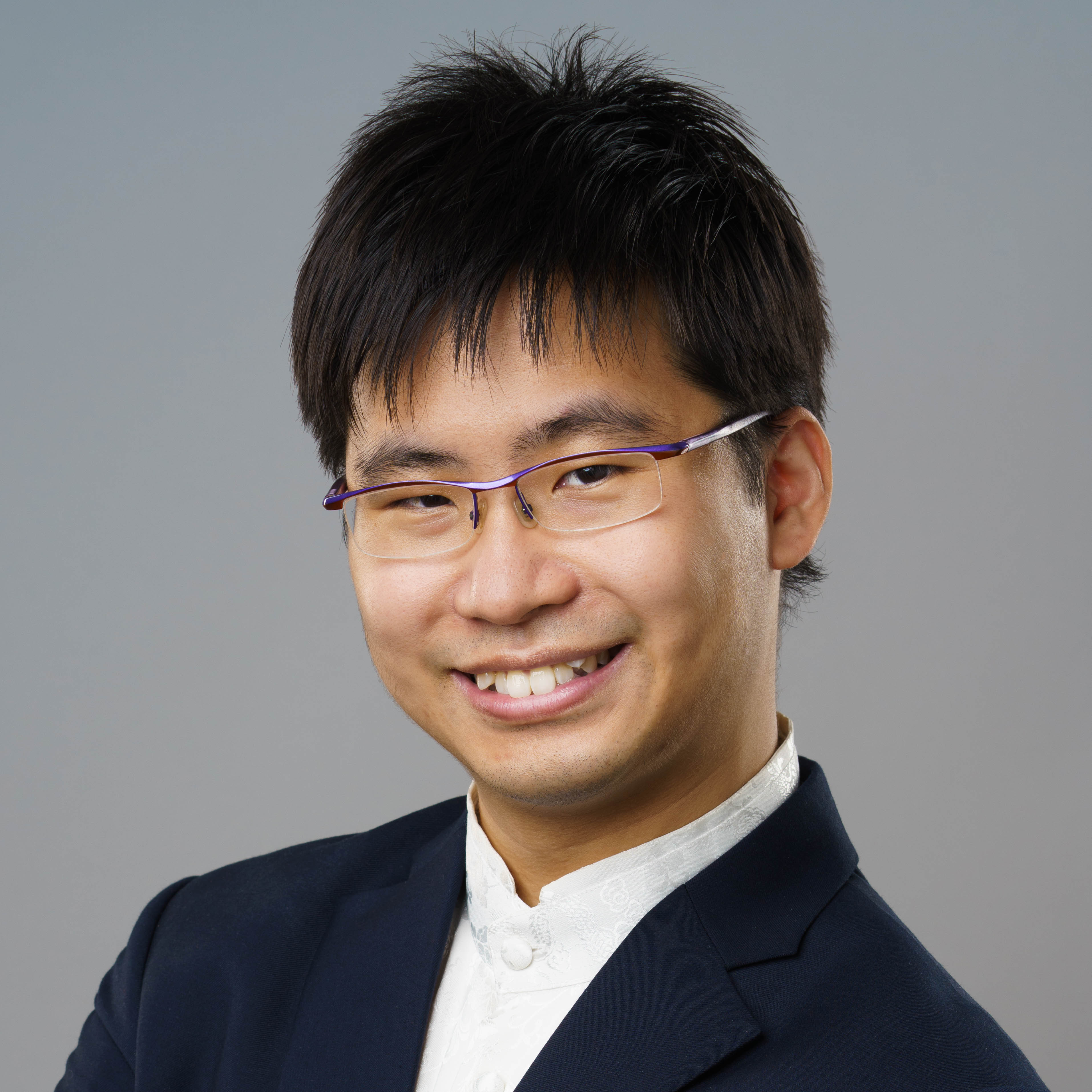 |
Valerian Chen A*STAR National Science Scholar (Singapore) 2016-2021 "I am
working towards a DPhil under the supervision of Felix Parra
(University of Oxford) and Jon Hillesheim (Culham Centre for Fusion
Energy). My work is focused on measuring and understanding turbulence
in fusion plasmas. I am developing a model for the interaction between
microwaves and turbulent density fluctuations to analyse and interpret
data from the Doppler Backscattering (DBS) diagnostic. DBS is
especially important for future tokamaks as it is one of the few
available diagnostics which are robust enough to withstand high neutron
fluxes.
Before coming to Oxford, I dabbled in various areas of photonics, optics, and magnetism. In my spare time, I enjoy cooking and baking: skills I initially learnt in order to maintain culinary standards whilst subsisting in the UK." |
|
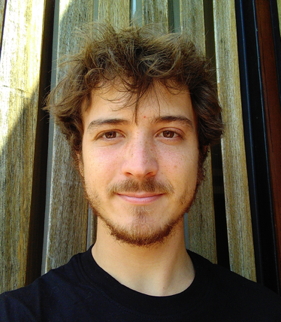 |
Gil Triginer Garces Merton Graduate Scholar in Physics 2015-2019 "I am a
telecom engineer by training and a physicist by inclination, now
working towards a DPhil in the field of quantum optics under the
supervision of Professor Ian Walmsley.
Quantum mechanics is famously known to be counter-intuitive, even troubling at times. We can describe mathematically certain quantum phenomena, such as superposition or entanglement, and use that knowledge to make correct predictions, yet we seem to lack a satisfactory interpretation of what “really happened.” Yes, we can shut up and calculate, but still the uneasiness remains. It is just not intuitive! This is why, in an engineer-minded way, I decided to pump this intuition by spending four years of my DPhil tinkering with quantum mechanics: building systems with quantum-mechanical features, exploring what new information processing tasks these enable and thinking what this tells us about the world. In particular, my research will be focused on the generation and characterization of big quantum states of light, and their use for computation and communication tasks. It is not straightforward to define what a big quantum state is (many particles? a superposition of many modes? very high entanglement?), so one of the questions along the way will be to characterise adequately the size of the states and the extent to which they are “non-classical”. Working with these big quantum states also provides an opportunity to ask questions about why macroscopic objects don’t exhibit quantum features in everyday life." |
|
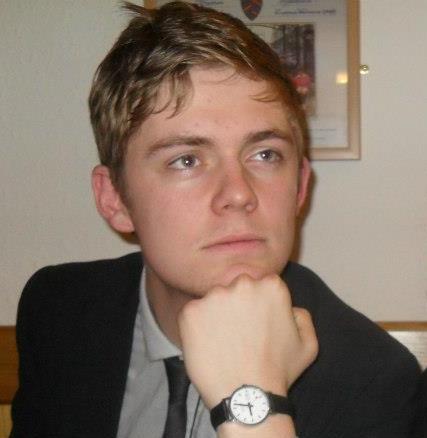 |
Richard Fern Graduate Scholar 2015-2017 (co-sponsored by EPSRC via Oxford Condensed Matter Theory Group) "Now this a story all about how, My life got flipped turned upside down, And you should take a minute just read this ad, About how I became a scholar as a Merton grad. In Lincolnshire I was born and raised, But Merton's where I spent my undergrad days, Chillin', doing Physics, the whole thing did rule, And then I earnt the Scott Prize, which felt pretty cool, Then a couple of areas that I thought were good, Started looking tempting to be understood, So I got in one interview process to which they said 'great, You're working with Steve Simon on topological states'. In a normal state it's the order that's clear, Like a solid which arranges with atoms all near, But a topological phase is so much more rare, And quantum computing is possible there! This ... boils ... down to anyons found in many such states, Which if braided around form logic gates! And this is my work, I'm finally there, To research some theories that could lead anywhere." |
|
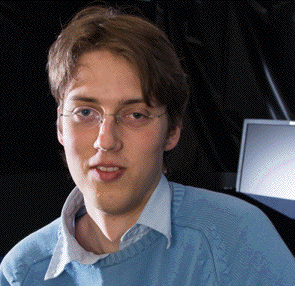 Image by John Cairns
|
Adrian Menssen The 4th James Buckee Scholar 2014-2018 (co-sponsored by Oxford Atomic and Laser Physics) "The nature of quantum
mechanics seems to be counter-intuitive at first glance and very far
from the reality that we experience. However, its elegance is
undeniable to any physicist studying it. The strangeness is precisely
what makes it so interesting. I have been intrigued by it from the very
first encounter in my academic curriculum.
At Oxford, I work in the field of quantum optics. While I have a great interest in fundamental questions surrounding quantum mechanics, as an experimental physicist, I am especially interested in the realisation of experiments that help us find answers to these questions. The rising field of quantum information processing, in which quantum resources are used to approach computational problems, is of particular interest to me. Our ability to construct feasible architectures for quantum information processing is inextricably tied to our understanding of the fundamental concepts that govern the quantum world. Quantum optics provides an excellent framework for testing our knowledge of the quantum world. In my DPhil project, I want to develop new experimental methods that will enable insights into the fundamental aspects of the quantum properties of light. I started my career in physics at the Johan Wolfgang von Goethe University in Frankfurt, Germany, followed by Masters project at Lawrence Berkeley National Laboratory in Berkeley, CA, where I worked on structural analysis of molecules using inner-shell photoelectrons." |
|
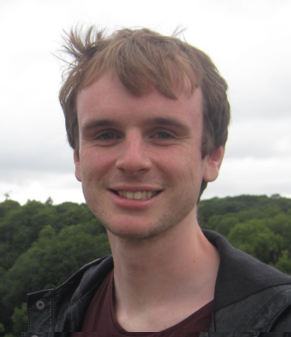 |
Jason Sanders Prize Scholar 2013-2014 "I am a theoretical astrophysicist working towards a DPhil on the dynamics of the Milky Way under the supervision of Professor James Binney.
The Universe has structure on a vast range of scales, from the elements
and molecules found on Earth to huge cosmic webs of matter which extend
over millions of light-years, and our Galaxy, the Milky Way, is a
complex structure that sits at the interface of these extreme scales.
It consists of a few hundred billion stars, gas and a poorly-understood
dark matter component. One of my areas of interest is tidal streams of
the Milky Way. These filamentary objects are the result of smaller
satellite galaxies that have been tidally disrupted by the Milky Way.
Their structure depends on the shape of the Galaxy, so we can constrain
properties of the Galaxy from stream observations. In particular they
provide a powerful probe for the large-scale dark matter distribution
in the Galaxy.
I am also working on constructing complex models for the joint chemical and dynamical evolution of the Galaxy. This is a powerful combination for uncovering important information regarding the history of the Galaxy. Dynamics reveals the current state of the Galaxy, whilst chemistry uncovers the past. It is certainly a very exciting time to be involved in Milky Way research. In December 2013 the European Space Agency launched Gaia, a £650m space mission destined to take a stereoscopic census of around one billion stars in the Galaxy. In the coming years our knowledge of the Milky Way will increase rapidly, and many exciting discoveries are just around the corner." |
|
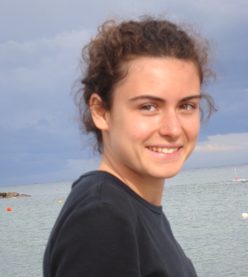 |
Chiara Marletto Prize Scholar 2012-2013 "I am a quantum physicist doing research for a DPhil in
Quantum Information at the Mathematical Institute, under the
supervision of Artur Ekert. In my intense, happy and fruitful
time at Merton I have been mainly wondering about the nature of
information and about its status within physics. One of the issues I am
currently investigating, together with David Deutsch, is how to apply
the recently proposed Constructor Theory to provide a fundamental
theory of information within physics. Another intriguing line of my
research is about how to find effective ways to transfer and copy
information from one quantum medium to another – a task on which
quantum theory imposes strict constraints. This has recently led me to
consider the deep problem of how the logic of self-replication can be
consistent with Quantum Theory.
Considerate la vostra semenza: fatti non foste a viver come bruti, ma per seguir virtute e canoscenza. ['Consider well the seed that gave you birth:/ you were not made to live your lives as brutes,/ but to be followers of worth and knowledge.' Dante, Inferno XXVI, 118-120, translated by A. Mandelbaum] Dante’s Ulysses stands out for his relentless, burning desire to expand human knowledge far beyond the boundaries set by conventional wisdom. A scientific researcher ante litteram, whose example is still inspiring to this day. Many unsolved beautiful problems are still waiting for us, out there: it’s time to sail out and address them. It will be a dazzling and adventurous journey of conjectures and refutations, tentatively tending to the boundless growth of human knowledge." |
|
 |
Alexander Karlberg The 3rd James Buckee Scholar 2012-2016 (co-sponsored by STFC via Oxford Particle Theory Group) "I
did my undergraduate studies (BSc) in physics at the Niels Bohr
International Academy, Niels Bohr Institute, University of Copenhagen,
where I also recently completed my MSc, for which I handed in a thesis
named "Space-Cone Gauge and Scattering Amplitudes". At Oxford I hope to
gain a deeper understanding of scattering amplitudes in quantum field
theories and in particular how to simplify calculations of amplitudes
and how to apply these simplifications in calculations of real physical
cross sections --- especially those related to the Higgs- and
QCD-sector of the Standard Model.
As the LHC has been running for a few years and with the recent discovery of what might be the Higgs boson, the field of theoretical high energy physics is very exciting and active at the moment. The experimentalists are really pushing the limits of precision calculations, and as a result there is a lot to be done optimising existing methods and getting past NLO calculations." |
|
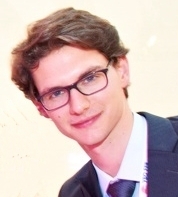 |
Thomas Scaffidi Merton-Clarendon Scholar 2012-2015 (co-sponsored by the Clarendon Trust and by EPSRC via Oxford Condensed Matter Theory Group) Prize Scholar 2014-2015 "I
am from Devant-les-Bois (which could be translated as "The Edge of the
Woods"), a small town in the Belgian countryside. During my Bachelor in
Engineering at UC Louvain, I developed a deep interest in fundamental
science in general and in physics in particular. This was the reason
why I did a Master in Physics at Ecole Normale Superieure (ENS) in
Paris. I was funded by the ENS International Selection scholarship
which admits ten science students each year after a competitive
examination.
During my second year in Paris, I did a six-month research internship at Princeton Plasma Physics Laboratory, where I used numerical simulations to analyze the feasability of a renewable energy source called nuclear fusion. I really enjoy working on intellectually appealing physical concepts that are at the same time promising for future applications. In this perspective, I am starting a DPhil in the field of theoretical condensed matter physics, whose applications range from solar panels to quantum computers. I will work with Prof Steve Simon on interacting quantum many-body systems, which include Fractional Quantum Hall Effect, high-Tc superconductors, cold atomic gases, ..." |
|
 |
Robert
Lasenby The 2nd James Buckee Scholar 2011-2015 (co-sponsored by the Harmsworth Trust and by STFC via Oxford Particle Theory Group) Robert's undergraduate studies were at St John's College,
Cambridge, where he took the Mathematics Tripos, specialising in
Theoretical Physics for Part III. During the summers, he worked in a
variety of areas, including commercial research and software
engineering. Immediately after his second year, he participated in the
Summer Undergraduate Research Fellowships (SURF) programme at Caltech,
as part of the Cambridge-Caltech exchange scheme, working in the
Astronomy department on data analysis and simulations for a new
instrument.
He is now starting a DPhil in Theoretical Physics here at Merton, and is interested in topics including quantum field theories --- the class of theories that includes our best-established and most fundamental physical models, such as those currently being tested by the Large Hadron Collider --- and cosmology, the science of the universe on the largest scales and youngest times, especially insofar as it can shed light on fundamental physics. |
|
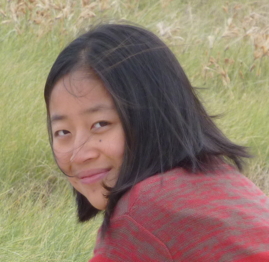 |
Yue Na (Nana) Liu Merton-Clarendon Scholar 2011-2014 (co-sponsored by the Clarendon Trust) "I
am a recent MSc graduate in theoretical physics from the University of
Melbourne and I majored in pure mathematics in my undergraduate days. I
have worked on extra-dimensional brane-world models and before then, I
studied various aspects of the modelling of granular materials at the
Department of Mathematics and Statistics at the University of
Melbourne. I am fascinated by theoretical particle physics. I would
like to learn as much as possible about the frontiers of modern
fundamental physics, like quantum field theory, string theory and
cosmology. At the moment, I am particularly interested in the AdS/CFT
correspondence, which has applications that seem to transcend former
boundaries in physics. Apart from physics and mathematics, I have very
keen interests in the philosophy of science and aesthetics,
evolutionary epistemology, palaeontology, entomology, music and
literature. I do not believe in the effectiveness of studying anything
in isolation and diverse interests, when conducted well, I think only
enhance understanding, problem solving skills and the development of a
more open mind. My wish in all that I do is to learn how to be a better
thinker and how to make the most out of my imagination in order to see
and offer more of the world's existing beauties."
|
|
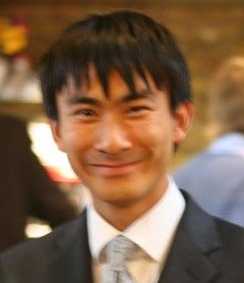 |
Lewis
Liu The 1st James Buckee Scholar 2010-2013 (co-sponsored by Oxford Atomic and Laser Physics) Lewis
is from Short Hills, New Jersey, USA. Before coming to Oxford, he
worked for two years as a consultant for McKinsey & Co.'s
London office where he focused on energy, corporate finance, and
M&A. Highlights included serving the European nuclear energy sector
and energy development in Pakistan. During McKinsey, he also worked as
a
part-time physics researcher at Imperial College London. Prior to
McKinsey, he had interned at CERN as a Harvard College Research Fellow
in Geneva, Switzerland. He has an Advanced Standing A.M. in
Theoretical Physics from Harvard University and was the first joint
A.B. graduate in Fine Arts and Physics at Harvard.
He now works in the Atomic & Laser Physics Department with Professor Simon Hooker. Lewis's D.Phil. research is focused on generating nanometer-scale-wavelength X-rays using quasi-phase matching to generate extremely high harmonics of a driving laser pulse. This is particularly exciting given the broad set of applications, such as fundamental microscopy, biophysics, chemistry, etc. In his spare time, Lewis is the co-chair and co-founder of the inaugural Oxford University UK Nuclear Energy conference, which brings together leaders in the UK nuclear energy sector to discuss the potential of renewed fission energy. He is also an active member of the men's tennis team at Merton. |
|